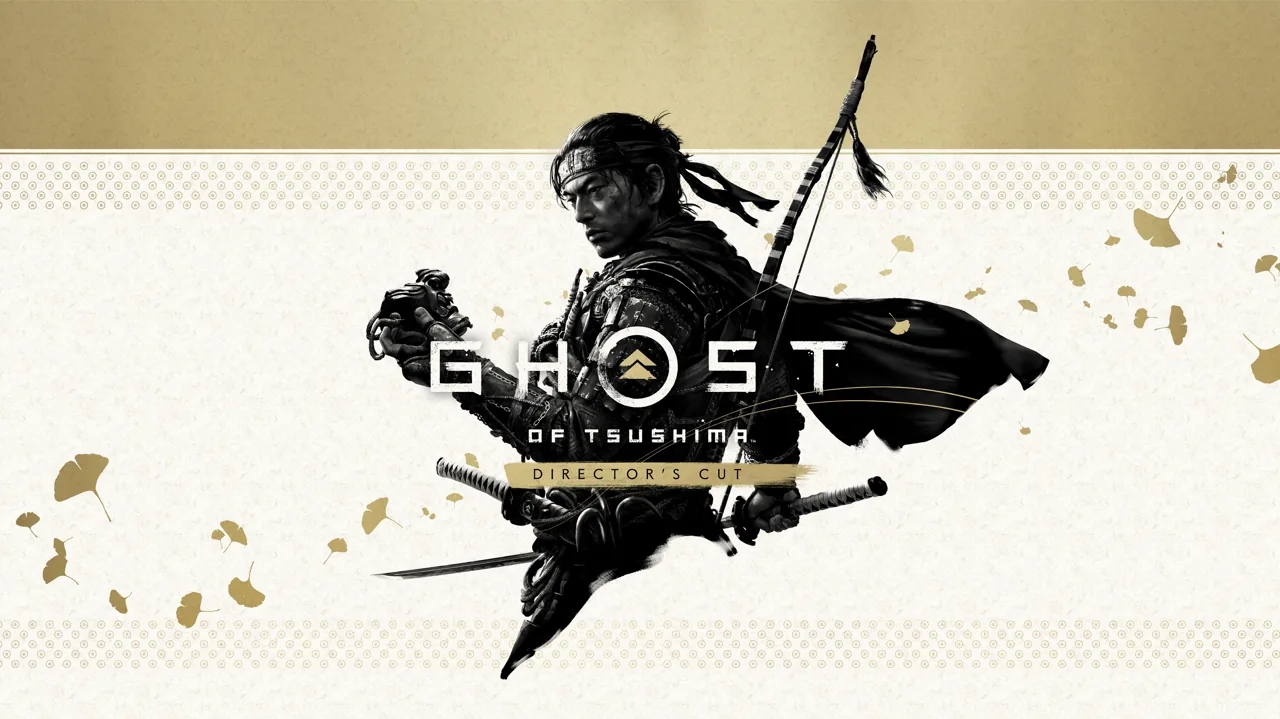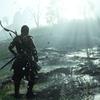Ghost of Tsushima Director's Cut review for PlayStation 5: A New Ghost Legend

Ghost of Tsushima Director's Cut is a great reason to upgrade to the standard version for PS5 and return to Tsushima. Or get to know the game if for some reason it passed you by. The updated version got a bunch of upgrades, both in graphics and the capabilities of the new DealSense gamepad. The game got support for 3D surround sound and has lost the loading screens as such thanks to SSD. The "Iki Island" story add-on turned out to be interesting, engaging and cohesive. But it's very short, which is somewhat frustrating. Upgrading the standard PS4 version to Director's Cut for PS5 is priced at $30. That seems a bit pricey considering the length of the add-on. And the fact that for oodles of games, the upgrade itself to "non-xtgen" was free.
5 reasons to buy Ghost of Tsushima Director's Cut:
- great visuals and atmosphere of Japan;
- cheerful and exciting combat system;
- interesting new story of Iki Island;
- implementation of DualSense features;
- no loading screen, 3D sound, stable 60 fps.
2 reasons not to buy Ghost of Tsushima Director's Cut:
- too short story add-on;
- the cost may seem a bit excessive considering the length of the add-on.
Fastpass:
- Frightening Mysteries of Iki Island
- Are there any innovations in gameplay and mechanics?
- How does it all look, sound, and optimized?
- In a nutshell








You can read about the basic plot in our review of the original Ghost of Tsushima version. The Director's Cut includes the story addition Ostrov Iki. The plot of Iki Island begins with a mission in a fishermen's village that has been attacked by Mongols. They are a previously unknown tribe to Jinu Sakai, with shamans. They are skilled at boosting the morale of the rest of the Mongol warriors. Under the influence of shamans, they attack more frequently and aggressively, parry the player's attacks better, and make unblockable attacks themselves more often. It becomes clear to Jin that the shamans have clouded the minds of the villagers as well. A surviving fisherman tells the protagonist about a mysterious tribe led by the sorceress Ankhsar-khatun, called the Eagle. She has already subjugated the island of Iki and is planning an attack on Tsushima.






Jin travels to the island of Iki to deal with Orlitsa and prevent her further attack. Jin has been to the island before and has a lot of extremely unpleasant memories from Iki that he has been trying to forget for a long time. He will have to face not only the Mongols, but also his own long-standing fears. This is compounded by the fact that most of Iki's population are pirates, brigands and smugglers. And the island's war with the samurai is not forgotten: the samurai are not favored on Iki. In particular, the Sakai clan. Alone, Jin cannot deal with the Eagle tribe. Which forces him to "form alliances" with characters who under normal circumstances are his enemies.






Iki Island is comparable in size to half of the first area from the main campaign. Which is consistent with reality if you look at the map. Yes, it's small, but the density of activities and side quests has increased significantly. As a result, the dynamics of the game does not fall because of the long movements around the island, as it was in the main part of Ghost of Tsushima. The island is not inferior in beauty to Tsushima. It is diverse, scenic, bright and colorful. The art has remained at the highest level and simply admiring the scenery is no less enjoyable than on Tsushima. The fauna of the island has also changed. Foxes are replaced by deer, cats and monkeys, which can be tamed by playing the flute.






The add-on itself turned out to be interesting, with well-developed and directed episodes. Iki Island helps you get to know Jin and his past better. As well as "getting to know" his father and finding out the circumstances under which he died. Large-scale and intense battles are also present, there is no lack of action. But the duration of the add-on frustrates. In general, the passage of the main storyline itself takes a maximum of 3-4 hours. In simpler terms, you can get through in an evening. Yes, the additional tasks, activities and new stories of ancient heroes will extend the process to 10-12 hours, but still would have liked a longer main storyline.
Are there any innovations in gameplay and mechanics?
The core gameplay mechanics remain the same, primarily the combat system. It was excellent in the main part of the game and it remains so in the add-on. The presence of new enemies slightly diversifies the process, but overall everything is familiar. Shamans, who "strengthen" the rest of the Mongolian fighters, should be eliminated first. Because fighters under their influence become really dangerous: they make long combos of unblockable punches, actively block and parry blows. Another small innovation - some Mongolian warriors have learned to change their weapons during the battle. For example, they can do a spear combo and switch to sword and shield. This encourages the player to change stances more often during combat. By the way, there were rumors about a new stance in the add-on. Unfortunately, the rumors were not confirmed.














Of the innovations worth noting is the new ability to break into a crowd of Mongols on horseback. This allows you to eliminate several without engaging in combat. There is a corresponding branch of the pumping. Another new ability of the horse - "outfit", in which you can store additional stock of arrows throwing weapons. This ability appears only after completing a certain quest. The first association - cases for extra ammunition on the bike in Days Gone. Just a little extended functionality cat hook. Now it can be used not only to move, but also to destroy some obstacles. There are also two new "guiding winds", which lead to the nearest archery competition, or place with wild animals.




Memories have been added as an additional activity. In certain places, Jin recalls events that took place in his childhood. When he was with his father and an army of samurai on the island. Tests for archers appeared, for the passage of which you can get certain bonuses. A tournament in which you have to defeat four opponents in a battle with wooden katanas. And, of course, taming wild animals by playing the flute. This is done in the form of a mini-game in which you have to play the right tune. The gamepad gyroscope is used for this. The familiar beacons, pillars of honor, and the occasional Mongol squad remain in place from the main game.
How does it all look, sound and optimized?








We played Ghost of Tsushima Director's Cut on PlayStation 5. The game doesn't run backwards compatibility now, it's a native version. The improvements are sufficient, but you shouldn't expect any radical revelations (especially if you played the original on PS5): still, the basic visual "foundation" and the engine used can't be changed. The game runs in a dynamic 4K with a frame rate of 60 FPS. From my personal impressions, the picture overall became sharper, especially it is noticeable in small parts such as branches and grass, more particles and smoke. And, as it seemed to me, the drawing distance increased. The overall impression of the picture is pleasant. Yes, some little things like not the most detailed models, simplified animations and periodic limbs hitting textures remained. But thanks to an incredibly beautiful overall game art, you just don't pay attention to these little things. The 60 FPS framerate is stable, there are no noticeable lags. Although they were not on PS5 and on backward compatibility after the corresponding patch.






What's really nice - thanks to SSD, the loading screens disappeared in the game as such. Loading the game and moving quickly is almost instantaneous. And another important upgrade is the DualSense support. The game makes very active use of all the new controller features. First and foremost, the new advanced vibration feedback. The gamepad reacts with vibration to almost everything: katana blows, the feel of each hoof strike on different surfaces, Jin's movement through tall grass, and so on. Adaptive triggers are also actively used in archery and using the cat hook.








Among the less significant innovations is the support for 3D sound in the headphones. Well, and lip sync with the voice track that was talked about in the promotional materials. This was made possible thanks to the performance of the new console and a fast SSD. At least, so the developers said. This feature will be appreciated only by those who will play with the original Japanese voiceover. And I don't think there will be so many of them. In Ghost of Tsushima Director's Cut there is a savegame transfer from the standard PS4 version. And it is made very conveniently and clearly. In the game menu there is a corresponding item. Works with both flash drive and cloud storage.
Bottom line. Three things to know about Ghost of Tsushima Director's Cut.
- The updated PS5 version got "tightened up" graphics, the use of DualSense features and stripped of the loading screens.
- Iki Island story quests take only 3-4 hours to complete.
- One of the best PlayStation exclusives of last year just got even better.
| Ghost of Tsushima Director's Cut | Genre |
| Adventure/third-person action | Platform |
| PlayStation 5/PlayStation 4 | Number of players |
| Single-player/multiplayer | Developer |
| Sucker Punch | Publisher |
Sony Interactive Entertainment
- Localization
- full (text and voice)
- Release date
- August 20 2021
- For those who want to know more:
- Ratchet & Clank: Rift Apart: r
- Concrete Genie review - one of the most important games of a generation with a strong premise
- Destiny 2: Forsaken review: a simple formula for a great add-on
- The Crew 2 review: sequel on minimums
- Detroit: Become Human review. We Are Human, Too!
- God of War: In the Cradle of the Scandinavian Gods review
